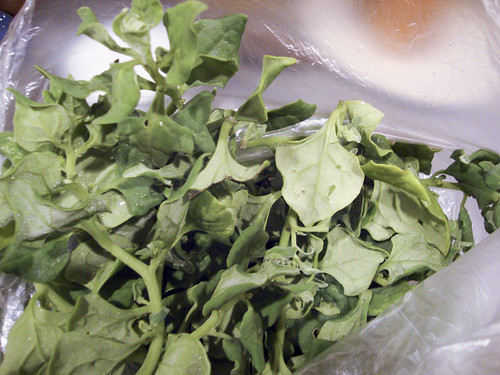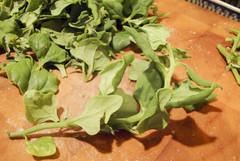 Tetragonia, or New Zealand spinach, is a green that you may find at the famers' market this summer. It's gotten very popular with farmers and shoppers because it doesn't bolt (go to seed and turn bitter) like spinach when the temperature rises.
Tetragonia, or New Zealand spinach, is a green that you may find at the famers' market this summer. It's gotten very popular with farmers and shoppers because it doesn't bolt (go to seed and turn bitter) like spinach when the temperature rises. 
Tetragonia is not a member of the spinach family, but it tastes a lot like it. The leaves are slightly succulent - not quite as juicy as your Mom's jade plant, but still. As a result, when you buying it, you should make sure the leaves are bouncy/crispy without a hint of wilty softness.

To prepare it for cooking, strip the leaves from the stems and wash them well. Sauté like spinach; I like mine with lots of garlic and a splash of lemon or vinegar. Not that Tetragonia has quite a bit of oxalic acid in it (like spinach and chard do), so your teeth may get that sandy feeling after eating it. It's also why I don't like eating tetragonia raw: I find the oxalic acid sandiness is diminished when the vegetable is cooked. Also, because oxalic acid isn't super-great for your liver in general, don't go eating this stuff at every meal.



No comments:
Post a Comment